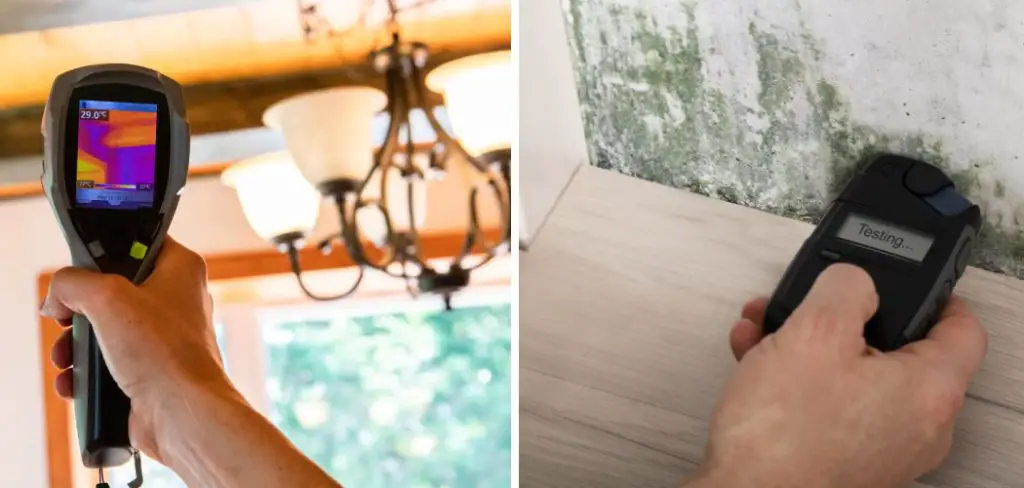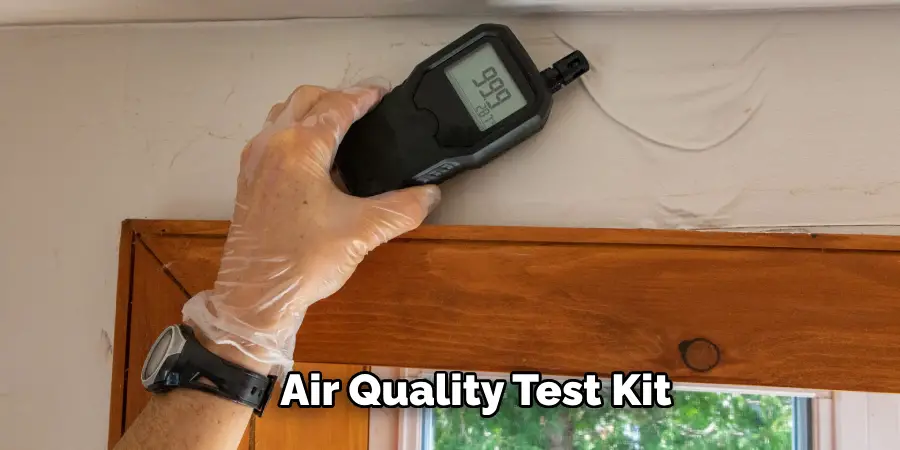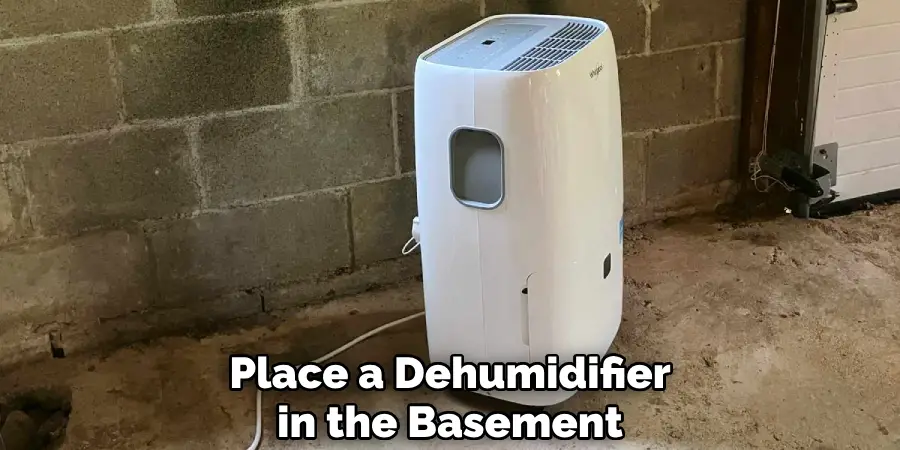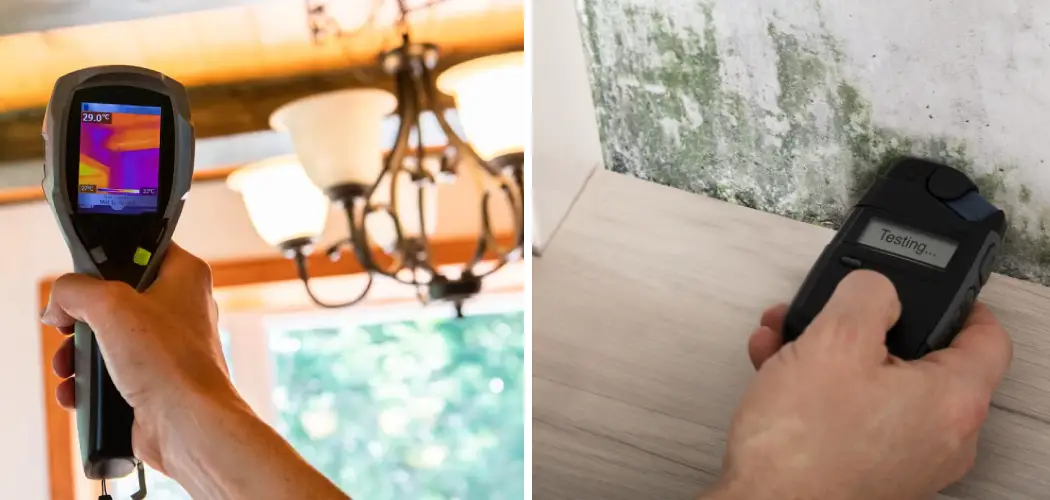Have you ever been in your basement and wondered if the environment was safe for spending time or working in? Air quality should be a top priority when considering this, as it can have an impact on your health. If you are worried about the air quality of your basement, testing for pollutants is an important part of determining whether it’s safe to spend time there.

In this blog post, we will discuss how to test air quality in basement and what steps to take once you know the results. Read on to learn more about how to ensure that the air in your home stays clean and safe!
Step-by-Step Guidelines on How to Test Air Quality in Basement
Step 1: Identify Potential pollutants
The first step to testing air quality in the basement is identifying potential pollutants. This can include anything from mold and dust to carbon monoxide or radon gas. Make sure to look for any signs of visible contaminants such as water damage, standing water, or peeling paint. You should also consider other environmental factors such as sources of combustion, such as a furnace, or any chemical materials stored in the basement.
Step 2: Purchase an Air Quality Test Kit
Once you have identified potential pollutants, the next step is to purchase an air quality test kit that will allow you to measure the amount of contaminants present in your basement. Make sure to select a kit that is specifically designed for testing air quality in basements, as this will ensure accuracy and reliability. t

Step 3: Follow the Instructions and Collect a Sample
Once you have your air quality test kit, the next step is to carefully follow the instructions included with it. This will involve collecting a sample of your basement’s air using the equipment provided by your kit. Make sure to collect a sample from different parts of the basement to get an accurate snapshot of the air quality in your home.
Step 4: Send the Sample for Analysis
Once you have collected your samples, you should send them off for analysis. Depending on your kit, this may involve mailing it back to the company or sending it electronically. Most companies will provide you with the results within a few days. This will give you a better understanding of the air quality in your basement.
Step 5: Interpret the Results
Once you have your results, it’s important to interpret them correctly in order to determine their overall impact on your health and safety. If the air quality of your basement is found to be unsafe, you should take steps to improve it immediately. This may involve cleaning or ventilating the area more frequently, sealing off any drafts, or installing air filters.
Following these steps is the best way to ensure that your basement’s air quality is safe and healthy. Testing for pollutants on a regular basis should be part of any routine home maintenance plan.
Additional Tips and Tricks to Test Air Quality in Basement

1. Invest in an air purifier. This is a great way to improve the quality of air in your basement and make sure that it’s free from allergens, dust, smoke particles, and other pollutants.
2. Make sure you’re regularly cleaning any carpets or furniture in the basement area. Carpets can trap dirt, dust, and other allergens that can worsen air quality.
3. If you have a gas stove or any other gas-powered appliances in the basement, regularly check their connections to make sure there’s no leaking of carbon monoxide. This is especially dangerous because it’s odorless and colorless and therefore very difficult to detect without a proper monitoring system.
4. Try to keep the basement area as dry as possible. Humidity can encourage mold growth, which will significantly affect air quality in a negative way and could pose health risks for those living in the home.
5. Open windows whenever you can allowing fresh air into the basement space, especially during warmer months when it’s safe to do so.
6. Have your basement regularly inspected and tested for air quality by a professional. This way, you’ll be able to identify any problems or areas which require improvement in order to ensure safe air quality in the space.
7. Provide adequate ventilation throughout the basement area to prevent stale air from accumulating and pollutants from building up over time. Consider installing a fan or air purifier to help circulate the air.
8. When in doubt, call in a professional who specializes in air quality testing and have them inspect your basement to give you peace of mind that your space is safe for living. This way, you’ll know exactly what steps need to be taken to improve the quality of air in your home.
9, Lastly, be sure to keep an eye out for any signs of mold or mildew in the basement – which can indicate poor air quality. If you spot any of these, take immediate action to remedy the situation and invest in a dehumidifier if necessary.
By following these tips and tricks, you can ensure that the air quality in your basement is safe and healthy for all those living in the home. It’s important to take this necessary precautionary measure and make sure that your environment is free from pollutants and other hazardous materials. Taking a few extra steps now can save you time, energy, and money in the long run – so it’s always worth the effort.
Maintaining Healthy Air Quality in the Basement

- Avoid using aerosols, pesticides, and other chemical products in the basement area – these can all contribute to poor air quality.
- Vacuum regularly to remove dust particles and any other debris from carpets and furniture.
- Place a dehumidifier in the basement to prevent mold and mildew growth, which can worsen air quality and cause respiratory health problems.
- Make sure any vents are kept clear of dust and obstructions – this will help ensure that air is able to circulate freely throughout the space.
- Avoid using any appliances or items that emit smoke in the basement such as candles, incense, and cigarettes.
- Keep your windows open when possible to allow fresh air into the space – this is especially important during warmer months.
- Check for any signs of pests or insects, which can also have a significant impact on air quality by releasing dust particles and other pollutants into the atmosphere.
- Ensure that your basement is properly insulated to prevent water from seeping in and causing dampness, which can contribute to mold growth.
- Have your HVAC system checked regularly by a professional – this will help keep air quality high in the basement area and ensure that your home’s heating and cooling systems are working efficiently.
- Finally, invest in an air quality monitor so that you can keep track of the level of pollutants in your basement and take action immediately if needed.
By following these tips and tricks, you can help maintain healthy air quality throughout the basement area of your home. It’s important to be aware of any potential issues that can arise with air quality and take the necessary steps to ensure that you, your family, and your home remain safe and healthy.
Frequently Asked Questions
What Are the Risks of Poor Air Quality in a Basement?
Poor air quality in a basement can cause physical symptoms like headaches, eye irritation, and fatigue. It can also increase the risk of respiratory illnesses such as asthma or allergies. In extreme cases, too much exposure to airborne toxins and contaminants could lead to serious health problems or even death.
What Are the Causes of Poor Air Quality in a Basement?
The basement is often the least ventilated room in a building, and this can contribute to poor air quality. Common causes of bad air quality in basements include mold and mildew growth, pests or rodents, off-gassing from certain types of furniture or carpeting, and chemicals from cleaning products or paint.

What Can I Do to Improve Air Quality in My Basement?
The first step is to identify the cause of poor air quality and then address it. This may involve sealing off any areas where pests or rodents are entering, removing mold or mildew, and replacing any carpets, furniture, or cleaning products that are contributing to the problem. Additionally, you should make sure that your basement is well-ventilated by opening windows and using fans.
Conclusion
In conclusion, testing air quality in a basement is a crucial part of maintaining a healthy home. Although it may seem intimidating to do so, with the right knowledge and resources, properly measuring air quality can be achieved easily and affordably.
As experts recommend that we all regularly check on our indoor air quality, now is the perfect time to learn how and why testing air quality in your own basement should be a priority. With proactive safety measures and careful monitoring, you can ensure that your family breathes safely while in their own home.
So why wait? Take action today and learn how to test air quality in basement – start with our helpful guide above!


